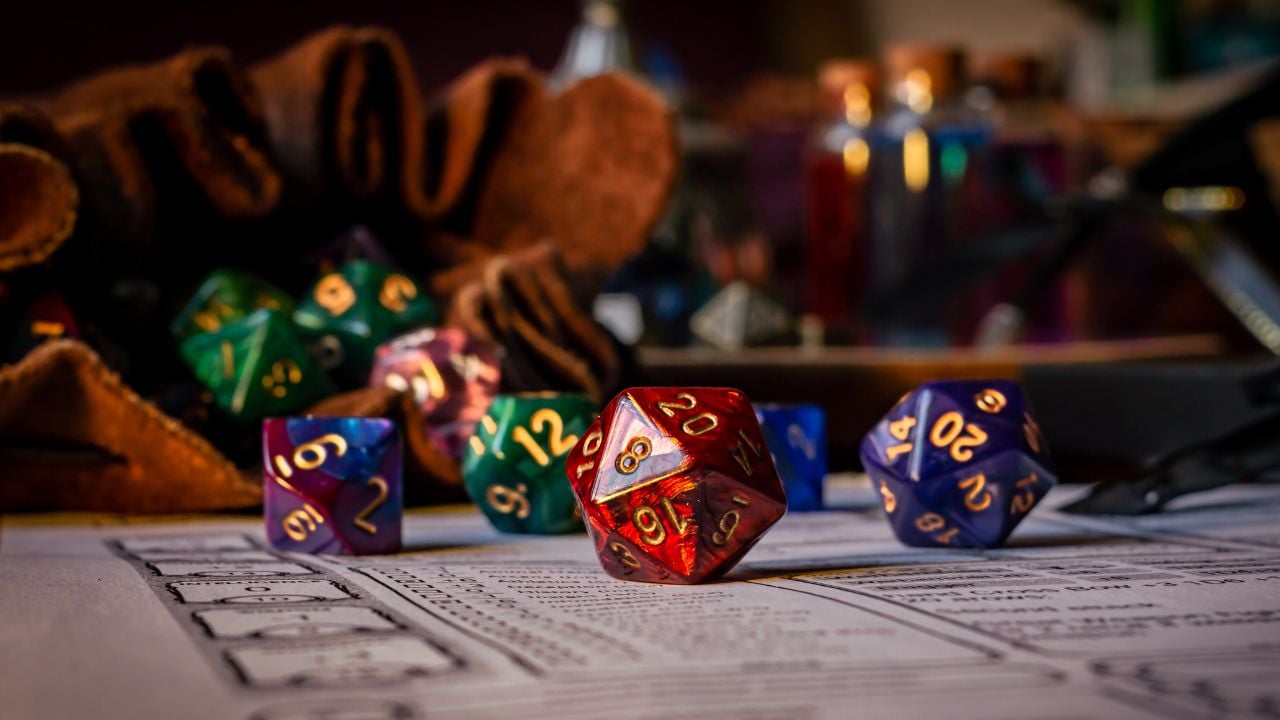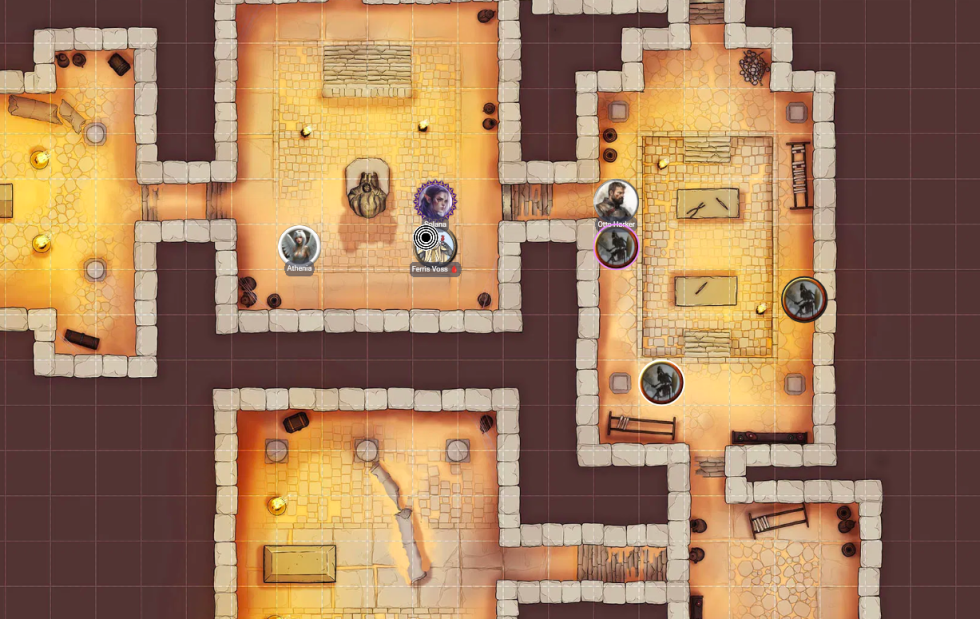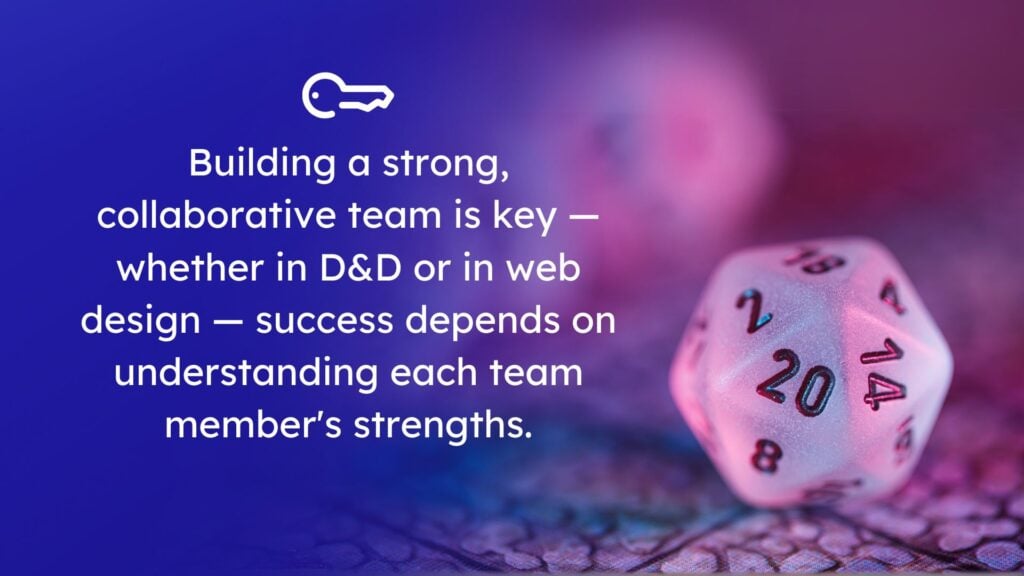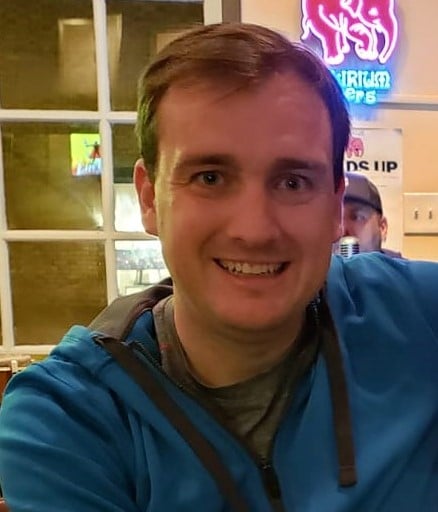How Dungeons and Dragons Made Me A Better Project Manager

A Fresh Approach To Project Management
In the spirit of continuous learning, I’ve always been on the lookout for ways to grow as a project manager. Quite surprisingly, I’ve found that the time I’ve spent playing Dungeons and Dragons has really helped me to grow as a technical project manager.
I’ve found that the best project managers are well-versed in client communication, team building, and resource management. The art of improv and live-action role-play offered through Dungeons & Dragons has given me a unique opportunity to practice each of these skills in a fun atmosphere that has benefited my clients and team members.
Transitioning From Technical Project Manager to D&D Adventurer
As I enter the world of Dungeons and Dragons, it’s time to take off my project manager hat and assume the identity of Jerome Emerson, an aging artificer working for a local crime family looking to take over the city of Port Damali.
For the next four hours, my friends and I will collaboratively tell a story together, which unknowingly helps me with critical project management skills such as team building, resource management, and active listening.
Assembling a D&D Party: Lessons in Team Building
The D&D Party Comes Together
It’s the start of a new D&D game, and a group of adventurers have been brought together to work towards a common goal. One by one, characters will enter the story, and your Dungeon Master will ask you to describe your character. What do they look like? How do they act? What skills do they possess to help your team work towards your objective?

A D&D party might consist of a well-practiced spell caster, such as a wizard, or a sneaky little guy who can check for traps like a rogue.
Much like a D&D party, a successful project team at Allegiance Group & Pursuant is built with a blend of skills — UX/UI designers, Developers, and QA analysts. It’s the project manager’s job to understand these strengths and ensure the team collaborates effectively to meet the client’s goals.
The Project Manager Assembles Team Allegiance
The skills and strategies considered when planning a D&D campaign aren’t all that different from the skills required of a project manager. When we engage with a client on a new project, I first assemble a team and create a project plan that utilizes all of my team members’ strengths and gives us the best chance to deliver a quality website for our clients that achieves their goals.
The Allegiance Party of Heroes might consist of a Project Manager, a UX Designer, a UI Designer, an Analyst, a Back End Developer, a Front End Developer, and a QA Analyst. Not unlike D&D, each team member will have their moment to shine, but the only way this works is if everyone understands their role, the jobs of their team members, and when they need to be involved.

See how our team partnered with Rails to Trails Conservancy on their redesign
Having the right team in place is critical to the success of a web design project. Once that team is in place, it’s my job to gather all of the background information the client has given to us and use that to guide our team throughout the project. This may include information we received in the proposal stage, including the RFP, proposal, contract, and background materials. It’s my responsibility to ensure that the team has the right people in place at the right time and that everyone on our team has the information needed to intimately understand our client to get the relationship off to a strong start and build trust with our client.
Managing Resources as an Adventurer and a Project Manager
The Adventurer’s Inventory
We’re back in the world of D&D, and I find myself examining my character sheet. It shows my name, my experience level, my proficiency, and the tools I have at my disposal. To survive the game, I must strategically manage resources such as health potions and spell slots to help my team be at their best.
The Project Manager’s Bag of Tricks
Similarly, as a project manager, I rely on tools such as Smartsheet and Jira to track progress, allocate resources, and stay on budget to ensure our project team has what it needs to be successful.
The Power of Active Listening: Insights from Role-play to Real Life
The D&D table I currently play at has a few simple rules that are critical for an enjoyable gaming experience. These takeaways have also helped me to grow as a project manager.
Keep Your Camera On at All Times
Covid changed our world in various ways, and the world of D&D was no exception. When the world went remote, so did my D&D games. Tabletop maps went virtual, headsets were donned, and everyone joined the game from the comfort of their own homes.
Within a few months, I took away a few observations. There was a significant difference in my experience between games where cameras were on vs. when cameras were off. In the games where cameras were off, I found it more challenging to determine emotions since I didn’t have facial queues to go off of. In some cases, players seemed more distracted and were attempting to multitask by watching TV, playing a video game, or surfing the internet, given that nobody could see them.
In contrast, in my games with cameras on, everyone was engaged in the game; we were focused on who was talking, and we could use their emotional reactions to drive the conversation to the next level.
Playing D&D with cameras reinforced the value of face-to-face interactions with my clients and team members. Whether it be a client meeting or an internal meeting, I advocate for keeping cameras on at all times to build stronger connections and, as a result, improve the quality of communication with everyone I interact with.
Pay Attention and Participate Fully (Even when you aren’t the center of attention)
One of the most remarkable aspects of D&D is that it’s not just any one person’s story. It’s a collaborative story told by many players. Each player has something to contribute, and every player will get their moment to shine in the spotlight. However, with that in mind, not every part of the story is about you.
There will be moments when you’re not talking, or you won’t be a significant part of a scene in the story. When I find myself in a position where someone else is speaking, many things go through my head.
First, I make a note of who is speaking and what they are speaking about. Will this information be important for me to act on later in the game? Can I contribute and add value to this conversation? This thought process has led to some of the best “yes and” role-play that I’ve ever been a part of.
As a Project Manager, I’m surrounded by a team of incredible subject matter experts. Each of them is given their moment to shine, whether that’s presenting wireframes and designs, collaborating with the client to define technical requirements, or working to define audience research.
In these moments, I’m not necessarily the expert leading the conversation. However, I’m still actively listening. I’m taking notes on what other team members say and documenting action items and next steps. In addition, I’m a good steward of the project scope and can intervene if I have concerns. When I’m fully present, I have the opportunity to see my teammate’s talents on full display. More critically, I ensure that nothing gets missed or slips through the cracks by being fully present.
Be Flexible and Open to New Ideas
I write my character’s backstory at the start of every D&D game.
- Who are they?
- Where are they from?
- What is their history?
- What life experiences have contributed to them being the way that they are?
- What is their objective/why might they go on this adventure?
Generally speaking, when I write these ideas, I have a rough idea of how I want my character’s story to go and, in a perfect world, who they’ll be at the end of the story. However, if you’ve ever watched the TV show “The Flash,” there’s a phrase that the villain Captain Cold says that I often reflect on. “Make the plan. Execute the plan. Expect the plan to go off the rails. Throw the plan away.” I’ve found this phrase to be true about life.
It is always wise to have a plan and execute that plan to the best of your ability. However, sometimes things don’t go quite as you expected, or you are presented with new information, so you have to adjust your strategy.
D&D reminds me of the value of adaptability. Just as game plans change, client requirements evolve. Staying flexible and open to new ideas helps me adjust project plans as needed and keep us on track for a successful outcome.
Key Takeaways
D&D has enhanced my team building, resource management, and client communication skills. The skills I developed at the D&D table, combined with my agency experience, enable me to build strong, trusting client relationships and deliver successful projects.
Let’s Talk
One of my favorite parts about Dungeons & Dragons is that it allows me to partner with a group of people to tell a story collaboratively. The next story I’d love to tell is the story of your nonprofit and how you’re working to make the world a better place. I’d love to talk to you about your next website redesign. The adventure starts now.
About Mike Arrowsmith

Mike Arrowsmith works as Senior Technical Project Manager for the Allegiance Group + Pursuant team. He brings over 13 years of experience leading web design and marketing projects for a wide variety of clients in the nonprofit and association space. Mike’s experience in developing and fostering client relationships has contributed to successful redesigns for clients such as Rails to Trails Conservancy, Center for Health Care Strategies, Lake Placid Center for the Arts, and Northern Illinois Food Bank.